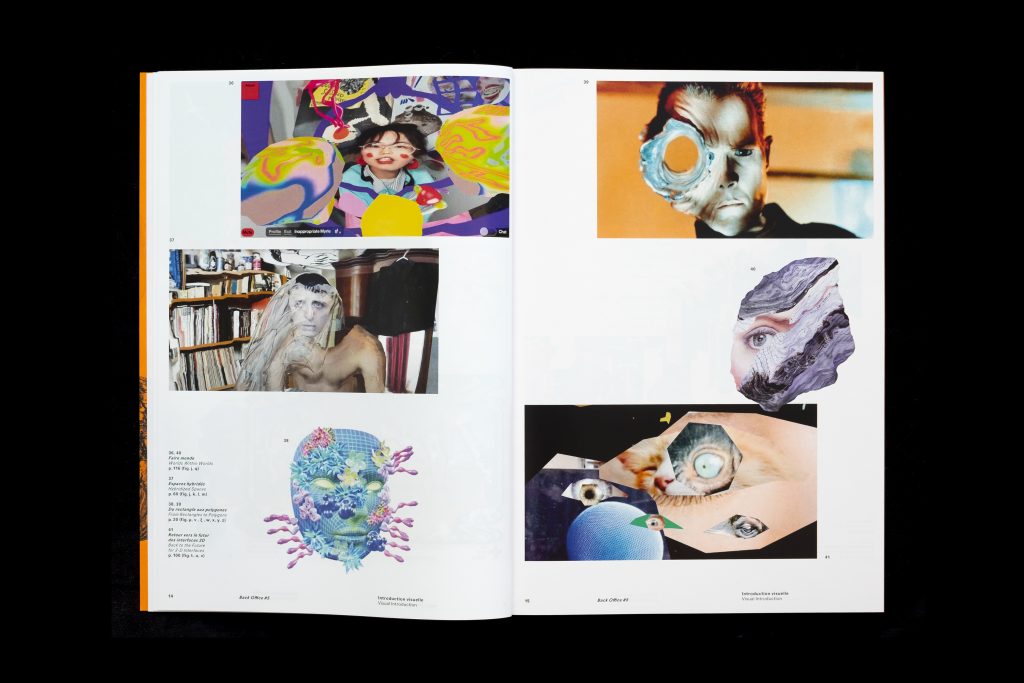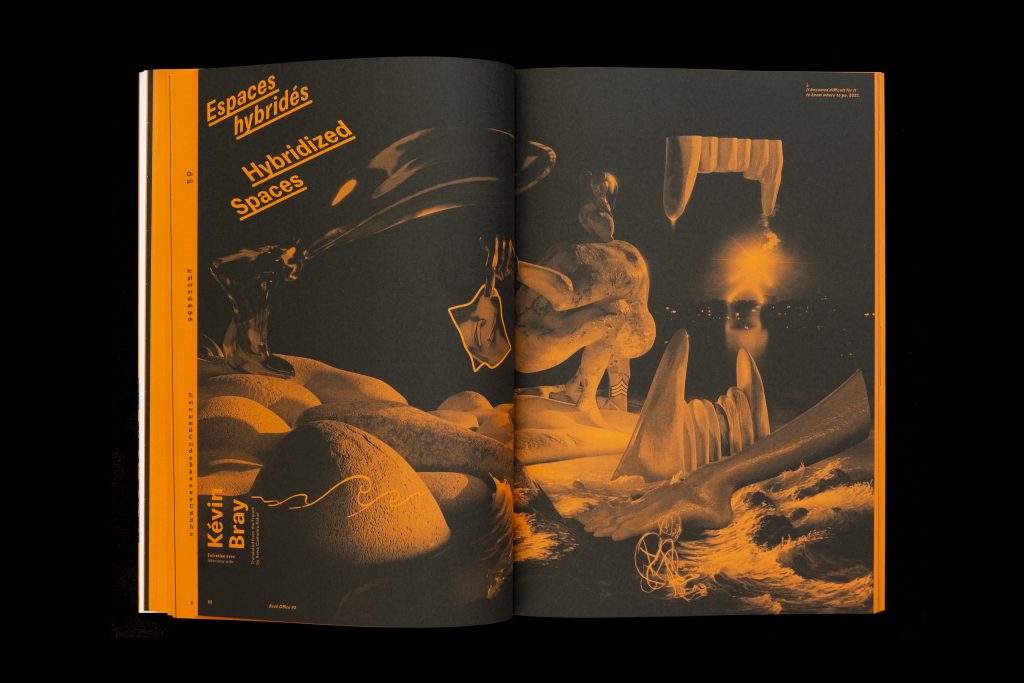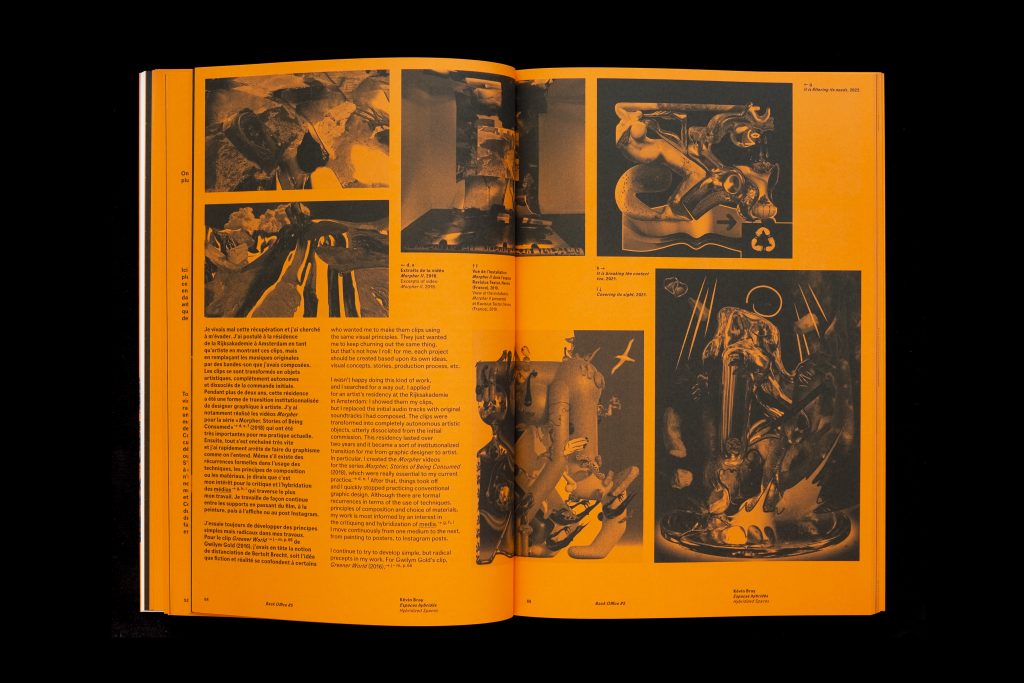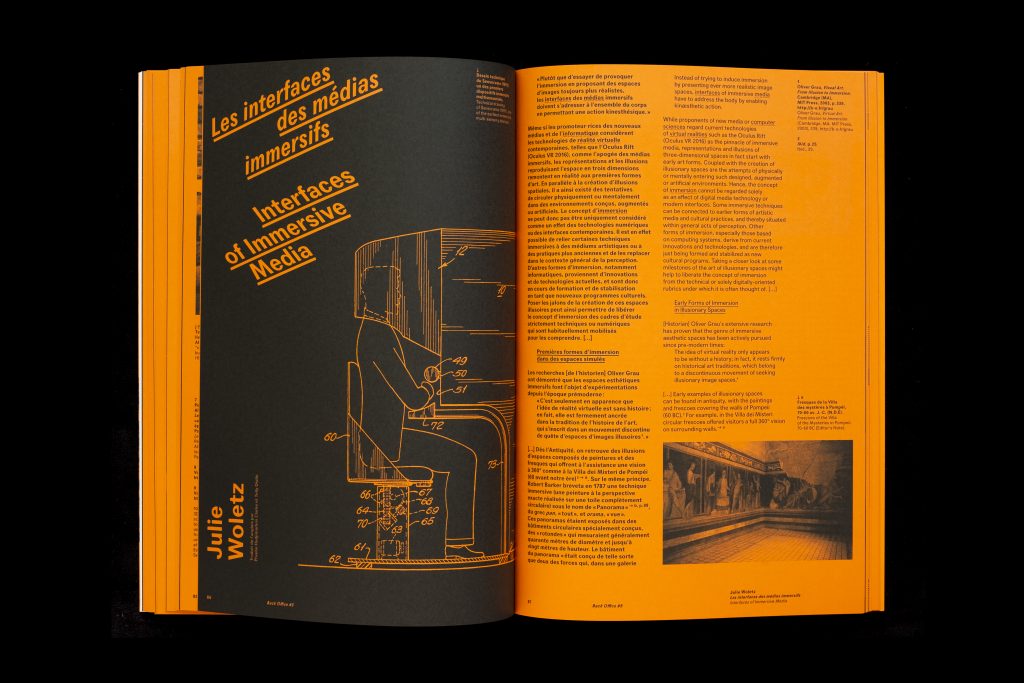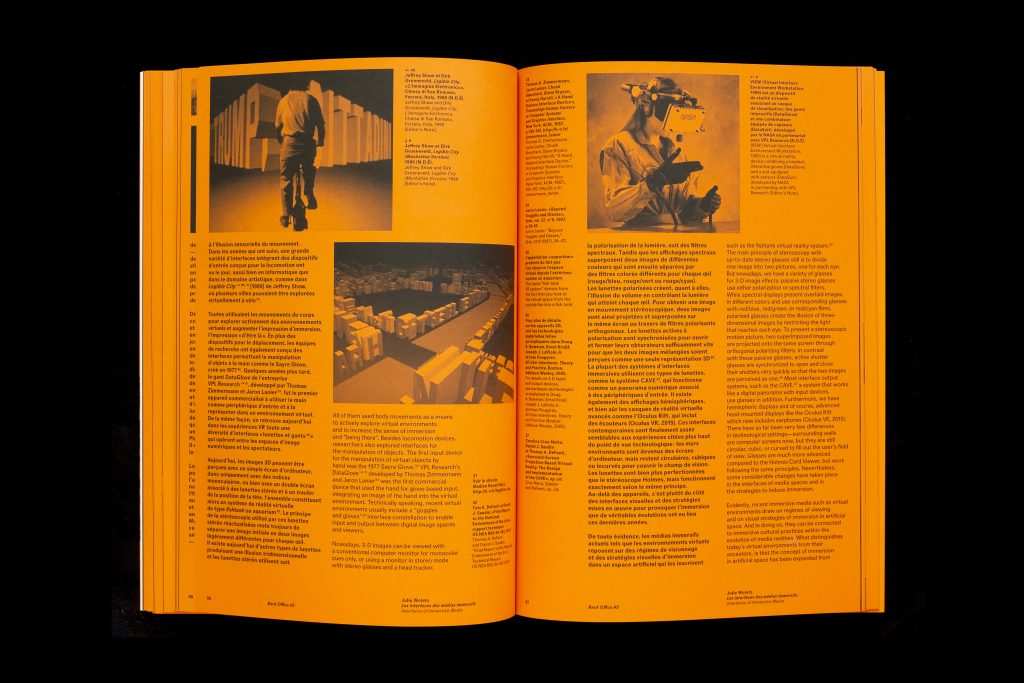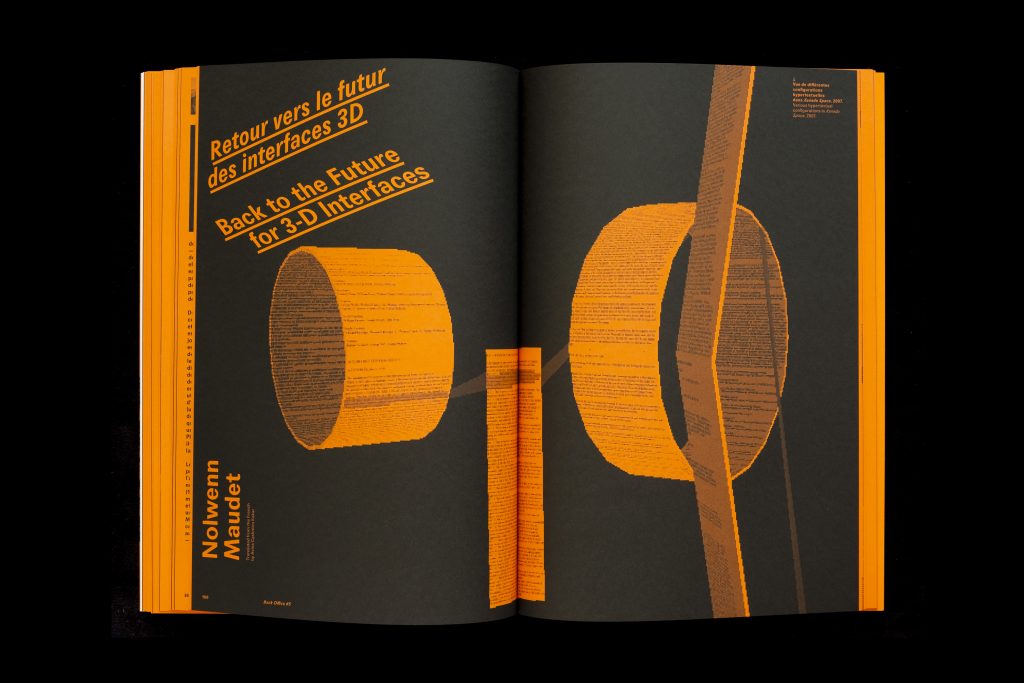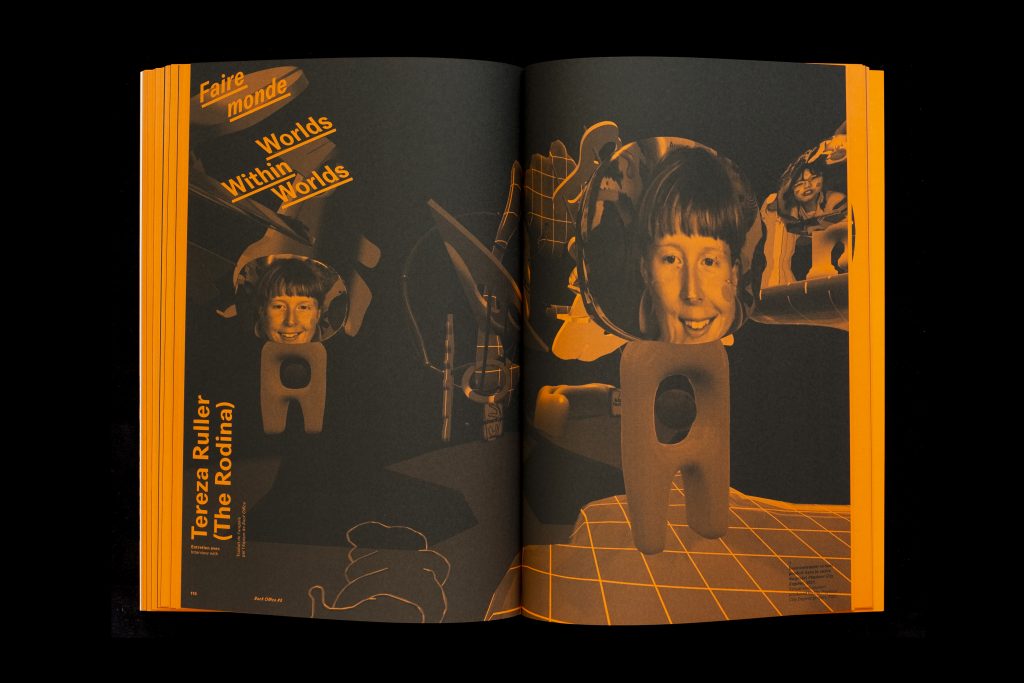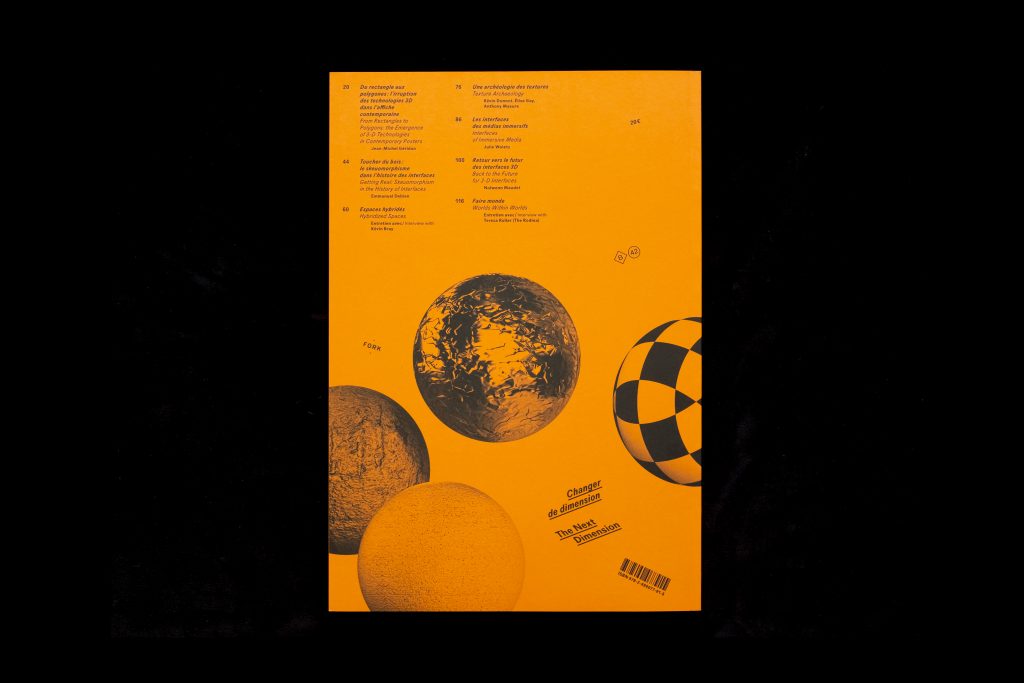BACK OFFICE N°5
GRAPHIC DESIGN AND DIGITAL PRACTICES
B42-191
publication June 2022
language English, French
designer E + K – Élise Gay & Kévin Donnot
size 195 x 280mm
pages 144 p.
ISBN 9782490077915
themes graphic design, typography
Co-published with Fork Éditions
Published with the support of Cnap – Centre national des arts plastiques.
Available in bookshops from 2nd June.
Back Office is an annual review which encompasses graphic design and digital activities. It explores the creative processes at work in the fields of contemporary media and digital practices. By dealing with themes such as the code/form relation, the challenges of creative tools, and the permeable nature of media, it is a unique French-speaking space for reflection and a worldwide vehicle of visibility for the French-speaking community. Back Office is entirely bilingual and is designed as an interface for the reception of the overwhelmingly English-speaking digital culture, through commissioned articles by foreign authors and original translations.
This fifth issue considers the increasing importance of 3-D technologies among graphic design productions. 3-D has never been as accessible as it is today, thanks to the increasing processing capacities, to the wide-spread use of open-source softwares and of “real-time” creation environments. Often limited to a search for photorealistic performance, 3-D is slow to offer a graphic language of its own.
What are the effects of this trend on the reader, in cultural, cognitive and sensitive terms ? What is the relation between image and text in a simulated environment, whether figurative or abstract ? This issue is an attempt to propose diverse answers, through interviews and articles, illustrated with numerous examples, taken from video games, interfaces or movies (Terminator, Mario Kart, etc.).
CONTENTS
From Rectangles to Polygons: the Emergence of 3-D Technologies in Contemporary Posters
Jean-Michel Géridan
Structured around the panorama of the formal vocabulary that is specific to 3-D (wireframe, normal maps, sliding textures, stereotypical lighting, reflections, transparency effects, etc.), this text observes the trend towards volume in contemporary graphic creation.
Getting real, skeuomorphism in the History of Interfaces
Emmanuel Debien
Since the desk metaphor has been used, and since the concept of affordance has been developed, graphic interfaces have constantly simulated reality in order to signify the virtual functions of the machine. One had to wait for the issue of iOS 7 (2014), and the transformation of the user interface, to witness fierce debates appear between advocates of “flat design” and defenders of “skeuomorphism”, two terms that were freshly imported from the spheres of UX Design. This article proposes to take critical insight on the origins of these two paradigms, their relation with the history of graphic design, their presumed effects and the logics underlying them.
Hybridized Spaces
Interview with Kevin Bray
Graphic designer Kevin Bray works on forms that articulate graphic signs, references to classical painting and representations with a photorealistic render. The Back Office team questions the origins and stakes of this singular practice, which constitutes an important landmark for a young generation that is keen on 3-D.
Textures Archaeology
Kévin Donnot, Élise Gray et Anthony Masure
This article is inspired by a YouTube video entitled “The Most Overused Game Graphic You Never Noticed | Texture Archaeology “, uploaded by Kid Leaves Stoop in march 2021. The article goes back over the history of textures (images patched on 3-D surfaces) through the epic of an online community who works into the ground recreating “high resolutions” computer versions of emblematic video games (Super Mario, Mortal Kombat, Final Fantasy, etc.).
Interfaces of immersive Media
Julie Woletz
Whereas technophiles see virtual reality as the apex of immersive medias and innovation, representations or illusions of tridimensional spaces can be found in the first forms of art. This article proposes then to examine the notion of immersion in aesthetic experience, in order to better understand its effects on cognition.
Back to the Future for 3-D Interfaces
Nolwenn Maudet
Originally thought as a way to conceive and network documents inspired by the paradigm of printed forms, the Web of the 1990 years has soon integrated tridimensional experiments in order to explore other ways to circulate in information hubs – thus extending pioneer experiments, as the ones of Muriel Cooper at the MIT. The matter is then to wonder which are the aesthetic, sensitive, functional and cognitive consequences of this dimension shift, which is still everything but obvious today, except in video games and virtual worlds.
Worlds within worlds
Interview with Tereza Ruller (The Rodina)
Interview with Tereza Ruller, cofounder with Vit Ruller of The Rodina. This studio has an experimental practice, where 3-D technologies are omnipresent, whether in the context of commands or in autonomous projects. They explore the spatial and interactive possibilities of virtual environments, as an area for new thoughts and aesthetics, born from the meeting of culture and technology.


